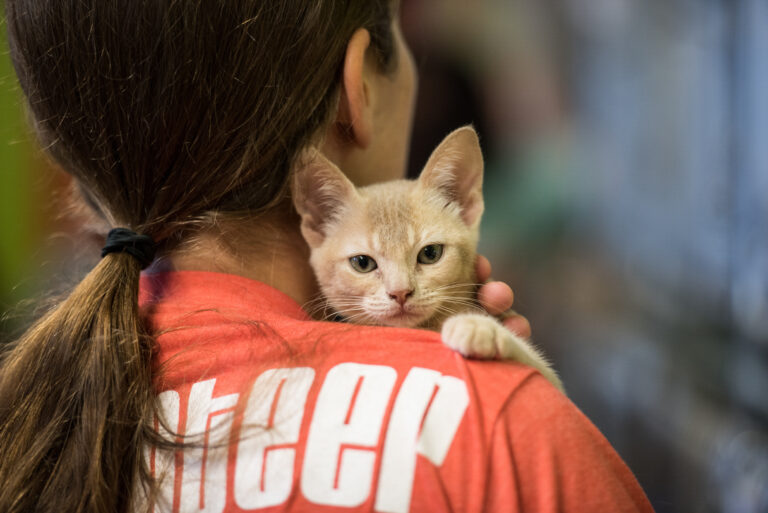Bringing home a shelter cat is a joyful experience, but it’s also a big transition for your new feline friend. Many shelter cats have faced uncertain pasts—whether abandoned, lost, or surrendered—and entering a new environment can be both exciting and overwhelming for them. As a new cat parent, your role is crucial in helping your cat adjust, feel safe, and eventually thrive in their new forever home.
Here’s a practical guide on how to make the transition smooth, stress-free, and positive for both you and your new shelter cat.
Table of Contents
Prepare a Safe, Quiet Space
Before bringing your shelter cat home, set up a designated safe space where they can decompress. A spare bedroom, bathroom, or quiet corner with limited foot traffic is ideal. Equip the area with all their essentials:
- A cozy bed or blanket
- Food and water bowls
- Litter box
- Scratching post or pad
- A few toys and hiding spots (like a covered cat bed or cardboard box)
Limiting their access to a smaller, controlled space initially prevents them from feeling overwhelmed by a large, unfamiliar home. It gives them a chance to slowly explore at their own pace and begin to build confidence.
Give Them Time and Space
Every cat adjusts differently—some will settle in within days, while others may need weeks. It’s essential to be patient and let them take the lead. Avoid forcing interaction, loud noises, or too much handling in the beginning.
Allow your cat to observe their surroundings, sniff around, and hide if they need to. Gradually, as they become more comfortable, they’ll venture out more often and begin to seek your attention on their own terms.
Establish a Consistent Routine
Cats are creatures of habit, and providing a predictable routine helps reduce anxiety. Feed your cat at the same times each day, maintain consistent litter box placement, and engage in short play sessions at regular intervals.
Consistency offers comfort, letting your cat feel more secure in knowing what to expect. Over time, they’ll begin to trust their new environment—and you—more and more.
Use Positive Reinforcement
As your shelter cat starts to explore and interact, reward them with gentle praise, treats, or petting (if they enjoy it). Positive reinforcement helps reinforce good behavior and builds a strong bond between you.
If they’re hesitant, try using interactive toys like feather wands or treat puzzles to engage them in a low-pressure way. This encourages healthy activity while allowing them to interact with you on their terms.
Gradually Introduce New Spaces
Once your cat appears comfortable in their safe zone—eating well, using the litter box, and showing signs of curiosity—you can slowly introduce them to more areas of your home.
Open one door at a time and supervise their exploration. Ensure other pets or family members are calm and gentle during introductions. Expanding their territory gradually prevents sensory overload and helps prevent behavioral issues.
Monitor Health and Behavior
It’s normal for shelter cats to exhibit minor stress-related behaviors initially, such as hiding, reduced appetite, or extra caution. However, if these behaviors persist beyond a few weeks, or if you notice signs of illness (like sneezing, diarrhea, or excessive lethargy), consult your veterinarian.
Many shelters provide initial health checks, but it’s always a good idea to schedule a wellness exam shortly after adoption to establish a baseline and address any concerns early on.
Respect Their Unique Personality
Every cat has a unique background and personality. Some may be playful and outgoing; others may be shy and reserved. It’s important to respect your cat’s pace and accept who they are. Avoid comparing them to past pets or expecting instant affection.
By providing a loving, stable environment, you’ll gradually earn their trust. Over time, they will develop their own ways of expressing love and forming a deep bond with you.
In Conclusion

Adopting a shelter cat is an incredibly rewarding experience, but it requires patience, understanding, and commitment. By creating a safe space, establishing a routine, and offering gentle guidance, you’ll help your new cat adjust to their home and begin a new chapter filled with security, love, and companionship.
Remember, small steps lead to big results. With time, your shelter cat will not only settle in but become an irreplaceable part of your family.







